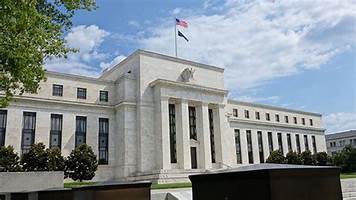OTHER NEWS
Goldman Pays Down $1.8B Settlement
- Monday, 05 November 2018
- Lending

Goldman Sachs has forgiven principal on 746 loans as part of two mortgage-related settlement agreements with the Department of Justice and three states, Eric Green noted in his ninth report as independent monitor of the consumer-relief portions of the agreements.
Goldman has been working to satisfy a $1.8-billion consumer-relief obligation under the agreements from April 11, 2016.
Since the last report was released on Aug. 1, 2018, Goldman Sachs forgave $78,678,617 in principal on 746 first-lien mortgages, for average principal forgiveness of $105,467 per loan, or $79,272,978. Goldman has now modified 10,671 mortgages, totaling $1,199,803,282 or 67 percent of the $1.8-billion target.
"I am pleased to be able to confirm that Goldman Sachs continues to make steady progress toward meeting its obligation to provide Consumer Relief valued at $1.8 billion," said Green.
The modified mortgages are spread across 42 states and the District of Columbia, with 32 percent of the credit located in the settling states of New York, Illinois, and California, and 47 percent of the credit located in hardest hit areas, or census tracts identified by the Department of Housing and Urban Development as containing large concentrations of distressed properties and foreclosure activities.
Goldman's two settlement agreements resolved potential claims regarding the marketing, structuring, arrangement, underwriting, issuance and sale of mortgage-based securities. Besides the Department of Justice, California, Illinois and New York, Goldman Sachs reached settlements with the National Credit Union Administration Board and the Federal Home Loan Banks of Chicago and Des Moines. Under the settlements, Goldman Sachs agreed to provide a total of $5.06 billion, including $1.8 billion of consumer relief to be distributed by year-end of January 2021.
Eric Green is a professional mediator and retired Boston University law professor, who was named by the settling parties as independent monitor with responsible for determining whether Goldman Sachs fulfills its consumer-relief obligations. He has assembled a team of finance, accounting and legal professionals to help perform that work.
Read more...Wells Names JP Morgan Vet To Lead Tech Team
- Friday, 02 November 2018
- Lending

Wells Fargo and Co. has named Courtney Smith Goodrich chief operating officer for the Enterprise Information Technology team. She joins from JP Morgan Chase and Co., where she was chief technology strategy and programs officer
Smith Goodrich will report to Scott Dillon, chief technology officer. In her role, she will have oversight responsibility for enterprise technology strategy, process and operational enablement. She will drive the business of IT and have a keen focus on prioritizing enterprise delivery through highly effective coordination and enablement of day-to-day operations of the Enterprise team.
“At Wells Fargo, we are transforming how technology is managed and utilized across the enterprise to drive better results for our customers,” said Dillon. “Courtney’s track record of leadership and success will be a valuable addition as we continue to evolve our technology capabilities and build toward the future.”
Over her 25-year career at JP Morgan Chase, Smith Goodrich has held a number of senior leadership positions. Most recently, she led the strategy, technology program management and oversight for JP Morgan Chase’s Global Technology organization. In addition, she directed multi-year planning activities for all technology organizations, including setting the three-year technology vision and objectives. Previously, she served as COO for Global Technology; COO for Corporate Technology, IT Risk and Security Management; and Global Technology Resource Manager.
Smith Goodrich shared her professional expertise as a mentor and sponsor to other employees and served as co-chair for the Technology Diversity and Inclusion Committee at JP Morgan. In addition, she is a frequent speaker at industry and university forums providing insight based on experience gained working across multiple lines of business.
She will assume her Wells Fargo role from current COO Theresa Wilson who announced her retirement in June after 40 years at the company. The first to hold this role, Wilson led strategic enterprise technology initiatives driving the organization toward greater transparency and more streamlined core functions. She will help Smith Goodrich transition into her role before retiring at the end of the year.
“I am grateful for everything Theresa has contributed to building the organization we are today,” said Dillon. “We will miss her calm demeanor in the face of great change and passion for team member engagement and empowerment.”
Read more...
Rates Dipped This Week
- Thursday, 01 November 2018
- Lending

Rates dropped slightly in the wake of last week’s increases, according to its Primary Mortgage Market Survey from Freddie Mac.
“While higher mortgage rates have led to a decline in home sales this year, the weakness has been concentrated in expensive segments versus entry-level and first-time buyer which remains firm throughout most of the rest of the country,” said Sam Khater, chief economist for Freddie Mac. “Despite higher mortgage rates, the monthly mortgage payment remains affordable. For many buyers the chronic lack of entry-level supply is a larger hurdle than higher mortgage rates because choices are limited and the inventory shortage has caused home prices to rise well above fundamentals.”
News Facts:
- 30-year fixed-rate mortgage averaged 4.83 percent with an average 0.5 point for the week ending Nov. 1, 2018, down from last week when it averaged 4.86 percent. A year ago at this time, the 30-year FRM averaged 3.94 percent.
- 15-year fixed-rate mortgage averaged 4.23 percent with an average 0.5 point, down from last week when it averaged 4.29 percent. A year ago at this time, the 15-year FRM averaged 3.27 percent.
- 5-year Treasury-indexed hybrid adjustable-rate mortgage averaged 4.04 percent with an average 0.3 point, down from last week when it averaged 4.14 percent. A year ago at this time, the 5-year ARM averaged 3.23 percent.
.
Read more...Fed Outlines Plan to Tie Bank Reg Scrutiny to Risk
- Wednesday, 31 October 2018
- Lending

The Federal Reserve has proposed a framework that ties the degree of regulatory scrutiny to amount of risk exposure of a bank. The proposal would reduce compliance rules for firms with less risk but would increase for firms with greater risk.
"The proposal would prescribe materially less stringent requirements on firms with less risk, while maintaining the most stringent requirements for firms that pose the greatest risks to the financial system and our economy," said Jerome. Powell, chairman of the Fed.
The framework establishes four categories of standards for large banking organizations--those with more than $100 billion in total consolidated assets. For instance, proposed categories could include Category I: Wells Fargo and Bank of America; Category II: Northern Trust; category III: Sun Trust and Fifth Third; Category IV: Silicon Valley and NY Community Bank. The Fed is accepting comments on the framework.
The changes would significantly reduce regulatory compliance requirements for firms in the lowest risk category, modestly reduce requirements for firms in the next lowest risk category, and keep, for the most part, existing requirements in place for the largest and most complex firms in the highest risk categories, according to the Fed.
"With these proposals, banking organizations will see reduced regulatory complexity and easier compliance with no material decline in the strength of the U.S. banking system," said Randal Quarles, vice chairman for supervision.
The factors that would determine the categories a bank is assigned to include: Asset size, cross-jurisdictional activity, reliance on short-term wholesale funding, nonbank assets and off-balance sheet exposure. Each factor reflects greater complexity and risk to a banking organization, resulting in greater risk to the financial system and U.S. economy.
Firms in the lowest risk category-- most domestic firms with $100 billion to $250 billion in assets—wouldn’t be subject to standardized liquidity requirements. They would remain subject to liquidity stress tests and regulatory risk-management standards. Additionally, these firms would no longer be required to conduct company-run stress tests, and their supervisory stress tests would be moved to a two-year cycle, rather than annual. These reduced requirements would reflect the lower risk profile of these firms.
Firms in Category II--those with $250 billion or more in total consolidated assets, or material levels of other risk factors, but are not global systemically important banking organizations, would have their liquidity requirements reduced; but remain subject to a range of enhanced liquidity standards. In addition, the firms would be required to conduct company-run stress tests on a two-year cycle, rather than semi-annually. The firms would remain subject to annual supervisory stress tests.
Firms in the highest risk categories wouldn’t see any changes to their capital or liquidity requirements.
In sum, the Fed estimates that the changes would result in a 0.6 percent decrease in required capital and a reduction of 2.5 percent of liquid assets for U.S. banking firms with assets of $100 billion or more.
The regulatory capital and liquidity aspects of the proposals were jointly developed with the Federal Deposit Insurance Corporation and the Office of the Comptroller of the Currency.
Read more...
